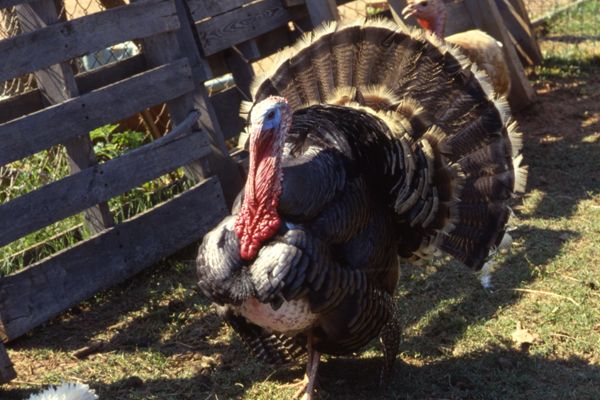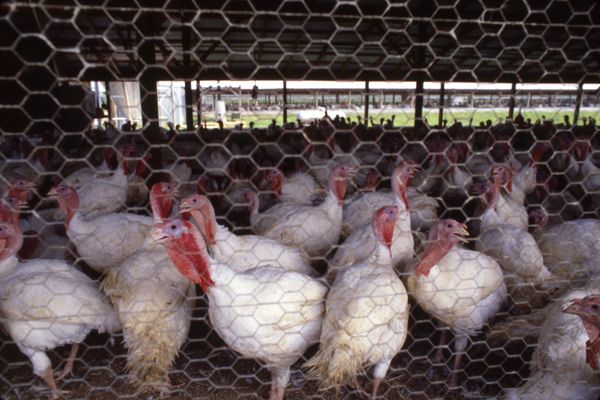My Cart
Your Shopping Cart is currently empty. Use Quick Order or Search to quickly add items to your order!
Andrew Jennings
Product Management Coordinator
As fall and winter approach, thoughts often turn to annual holiday gatherings and the food that typically accompanies these gatherings. One particular food, turkey, is a staple of the holiday season. Once considered a more majestic animal than the bald eagle, the turkey is a fierce and savage bird in the wild. However, the bird many Americans consume is not the same bird that the Meso-American civilizations first encountered over 2,000 years ago.
The turkey has undergone a process known as domestication. At its core, domestication is a specific form of artificial selection where the initial selection criterion is how well a species can live and breed alongside humans. Humans, not nature, then apply the selecting force to a species either by allowing organisms with desired traits to breed, or by withholding resources from organisms that do not contain the desired traits. By providing this selective pressure, humans have cultivated many breeds of turkey, all with unique attributes and differences that distinguish them from their extant wild progenitors.

The wild turkey, which is still found in the United States and much of Central America, is a wholly different bird than the one typically eaten. The wild turkey is a good flyer, often roosting in tree boughs, and it can run as fast as a horse in a straight line. The domestic turkey is, in many cases, incapable of flying. In fact, some have been known to get so large that their legs cannot even hold them up, rendering them unable to walk or breed.
Due to the pressure to create a more domesticated bird, Meso-American tribes bred turkeys that were less likely to fly away from humans or even to fly at all. This made it easier to collect eggs and catch turkeys for meat. Once turkeys were shipped to Europe by the Spanish, turkey meat was considered a delicacy, and breeding programs began to increase the size of turkeys to feed more people. Turkey size turns out to be a highly inheritable trait, with parent size indicating the maximum size a farmer can expect a turkey to attain.
Empirical studies have shown what farmers knew all along. To get a larger turkey, you need to select and breed the larger turkeys. But the question remained: When do you decide which turkeys are big? Of course, a 5-year-old tom (or male turkey) would weigh much more than a 6-month-old hen (or female turkey), but that does not mean those turkeys should or should not be used for breeding. As it turns out, selecting which turkeys to breed can be determined at around 8 weeks of age for both males and females. This selection has led to the modern domesticated turkey being twice the weight of the modern wild turkey.

Artificial selection of turkeys has led to a major shift in size and abilities between the wild turkey and the domesticated turkey. While wild turkeys are frequent flyers and can run faster than a human, the domestic turkey is incapable of flying and in some instances can barely walk, with males typically requiring human assistance to breed. The US Department of Agriculture tracked turkey growth over a 50-year period and found that, over the course of that time, body weight nearly doubled between domestic turkeys of comparable ages. As we sit down this winter to our turkey dinners, take a minute and think about how humans have shaped the life of the turkey and transformed this animal from its wild roots to the bird we all enjoy today.
AP® is a trademark registered and/or owned by the College Board, which was not involved in the production of, and does not endorse, this product.